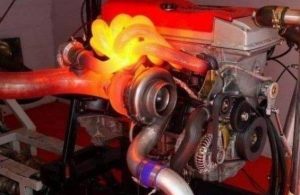Before we talk about the auxiliary coolant pump, let's understand the function of the coolant pump. The coolant pump pressurizes the coolant to ensure its circulation and flow in the cooling system. Generally speaking, it allows the water to circulate continuously through the radiator engine block. Take away the heat to ensure the engine is not hot.
Nowadays, with the fire of turbocharged engine, the cooling system has become another big problem for the major manufacturers. Because the running speed of the turbocharger is too high, up to 200000 rpm, combined with the exhaust gas temperature, the turbine temperature will reach about 1000 ℃. Once the engine stops running and the oil and coolant flow stops, the high temperature of the turbine can not be effectively cooled. After a long time, it is easy to accelerate the aging and damage of the turbine, which will also cause the oil in the bearing shell to overheat and form coking, resulting in excessive consumption of oil. In order to solve this problem and extend the life of the engine, the auxiliary coolant pump of the engine will come out.
The main function of the auxiliary coolant pump is that when the engine is stopped, the electric coolant pump can also continue to operate to make the coolant continue to circulate and fully dissipate the heat for the supercharger. Its working principle is: it is electrically controlled by the engine control module, and the water pump helps the engine turbocharger to cool under specific working conditions; after the engine is stopped, the electric auxiliary water pump will discharge the heat Turbocharger.

That is to say, in the process of driving, the engine control unit ECU will automatically adjust according to different working conditions to avoid excessive heat generated by the turbocharger damaging the turbocharger. After the engine has been driving at high speed for a long time, the vehicle will shut down directly, and this set of coolant circulating pump will still automatically continue to work for a period of time, eliminating the turbocharger's fault caused by overheating Hidden danger. In addition, if the control unit detects that the engine has no large load condition, it will also stop working according to the situation to achieve the purpose of energy saving.
In short, when the vehicle is running, it mainly relies on the large cycle cooling of the main pump, but after the vehicle stops, when the main pump stops working, if there is a problem with the auxiliary pump, the turbocharger will not be cooled, which will reduce the life of the turbocharger; in addition, the water vapor in the auxiliary coolant pump may cause a short circuit in the internal circuit, resulting in the high local temperature of the auxiliary coolant pump It may cause the engine compartment to ignite and self ignite when it is seriously corroded with related parts, which has certain potential safety hazards.
How to judge whether the coolant pump is damaged
1. Unstable idle speed: the failure of the coolant pump may increase the rotation resistance. Because the coolant pump is connected with the timing belt, the increase of the rotation resistance of the coolant pump may directly affect the rotation of the engine. At idle speed, it shows the speed jump after starting, which is more obvious in winter, and even causes flameout.
2. Noise from the engine: This is the friction sound of rotation, similar to the sound of "miso". The sound can be accelerated with the engine rotation and the volume changes. The noise is generally more and more obvious with the aggravation of the fault,
3. Engine water temperature is not stable: the indicator of engine water temperature fluctuates within a certain range. The reason is that the water temperature in the small cycle is inconsistent due to the lack of circulation. On the one hand, it causes the opening temperature of the thermostat to rise. On the other hand, after the high-temperature water flows out, the low-temperature water quickly flows to the thermostat, making the thermostat close quickly.
Generally speaking, the engine auxiliary coolant pump can effectively reduce the temperature of the turbocharged engine after shutdown, which has a good protection for the engine. It is recommended that when you find problems in the vehicle cooling system, you can deal with them in time to avoid the occurrence of larger problems.
